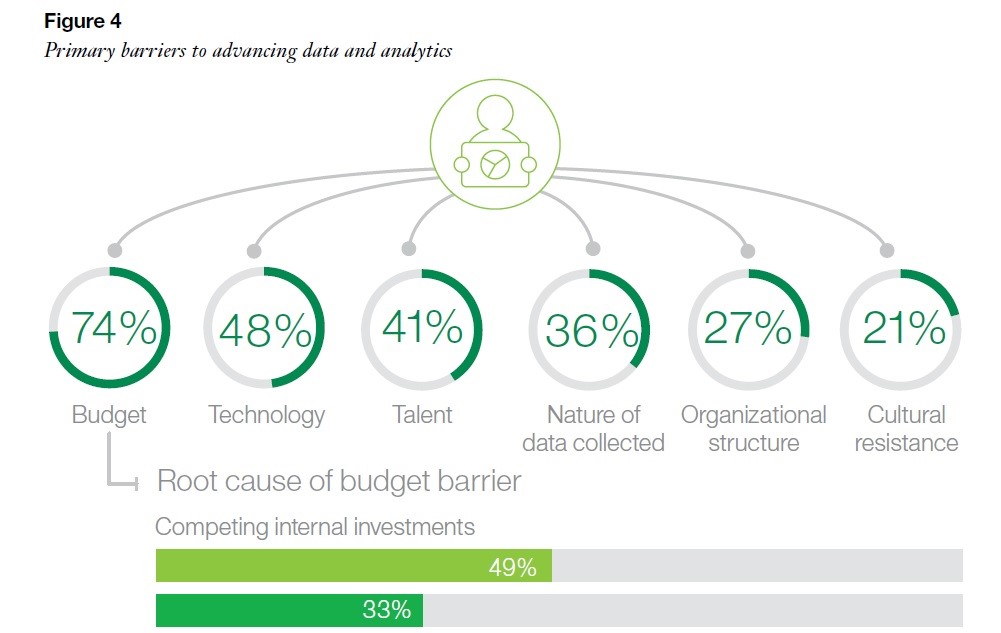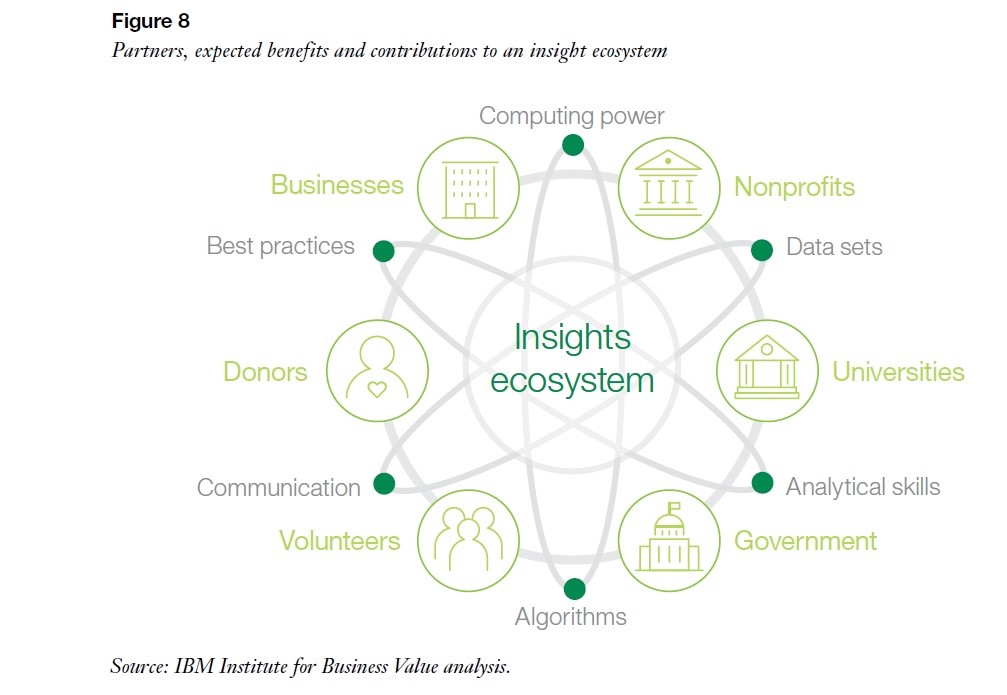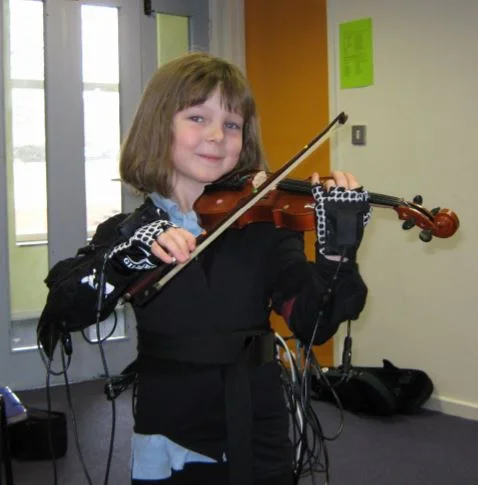3-D printing has been around for years, and is not a new piece of technology in the ceramics world, but now people have come to realize that 3-D printing isn’t replacing the handmade work of ceramic artist but enhancing it.
Affordable Options and Funding Sources for Bringing VR into the Classroom
A Simple Guide to Data Analytics for Nonprofits, Part II
More than a trend or a buzzword, data analytics are here to stay. Newcomers to arts management may find themselves asking, what does data analytics mean for me, and how and why does my organization need to use it? If you are new to arts management, or the data world in general, this two part series is for you!
This article is Part II of a two part series. Part I is available here.
Trends in the Nonprofit Sector
Donors and other major funders typically seek quantitative evidence of mission-related impact in communities therefore nonprofit organizations are making data analytics a standard part practice in daily operations. However, the transition into data-driven decision making hos occurred quite slowly, with over two-thirds of nonprofits reporting that they are only in the beginning stages of implementing data analytics. Furthermore, the majority of nonprofits report that they are not using external data for mission-related analysis; it seems that there is a lack of knowledge or disconnect about how big data can be captured for future community impact. In general, larger nonprofits are more likely to implement data analytics in tandem with improved strategic planning for the mission and programming. Smaller nonprofit organizations, or even arts organizations that wish to place on emphasis on people rather than numbers, have access to many of the same data analytics tools as larger counterparts—so the present concern is why are some organizations not implementing these accessible strategies which can have an immediate impact?
Graph of reasons for not doing data analytic cited by nonprofits: Image credit: IBM, Leap Before You Lag (2017)
Numerous barriers, ranging from internal to external environmental factors, are frequently cited as contributing to an organizations the lack of data analytics use. Particularly for smaller or newly founded organizations, the lack of proper technological infrastructure prohibits even the most basic data analytics collection. Similarly, some organizations cite their limited financial resources. Others are concerned about potential resistance to using data as a primary tool for decision making from major funders and financial decision-makers, such as government supporters and board members. A the perceived lack of expertise within an organization’s staff may also present a barrier.
Some of these challenges may be overcome by training staff in data analytics practices, outsourcing for professional consulting, or creating a staff position specifically for data analysis. Depending on the size and financial status of a nonprofit, each of those options can be a viable solution. Staff can be trained on the more basic analytics tools, and many consulting firms offer services that are specifically tailored to the arts nonprofit sector.
Due to the lack of confidence and informative insight for the implementation of analytics, it is imperative that today’s arts managers initiate a new data-driven operations model in their organizations and make the case to stakeholders. The total digitization of information has created a business environment where institutions cannot maintain long-term success without understanding the importance of data.
Best Practices
In assessing what type of data to analyze and how to acquire it, arts organizations may benefit from partnering with other nonprofits or seeking assistance from external sources as they begin the journey of analytics-based functioning. As budget constraints are often a prevalent issue, nonprofits may consider a shared data services model and forming an insights ecosystem. This ecosystem is a combination of resources, internal practices, and external information that can help to optimize profitability and mission-focused agendas.
Visualization of an insight ecosystem: Image credit: IBM, Leap Before You Lag (2017)
As demonstrated above, collaboration is actually a key component in the process to becoming a data-driven organization.
A clear strategic plan from a lead staff member concerning the critical nature of data in the arts/nonprofit sector is central to success. There must be a steadfast commitment to using data for major decision-making and a willingness to educate staff and other stakeholders about its benefits. Further, new data practices should align with the financial stipulations set forth by major funders and board members; data analytics must be presented in a way that buttresses the development of mission-based programming for real impact. In terms of internal staff, arts managers need to ensure that “actionable metrics” are defined and the organization invests in the necessary technology to measure said metrics. Data analysis can only be beneficial if the goals are defined and accessible through proper platforms. Consequently, data analytics best practices also require organizational leaders to inform staff of new data-focused operations and empower individuals to improve on their skills in the process. Outsourcing may not be necessary if staff members can be trained on new data software and have the desire to build on their current skillsets. Most important in the data analytics journey is that the emphasis on metrics will build or alter programming in a manner that furthers an arts organization’s mission, vision, and values. The metrics that show evidence of success should be analyzed on an ongoing basis, and should those metrics that show problematic trends should be via immediate changes in budget, programming, staff productivity, or which ever means seems appropriate. Behind all of these best practices lies an individual commitment to seek change; thus, the data analytics truly rests on the “human element” for real-world benefits to be had.
Conclusion
Arts organizations can no longer avoid the use of technology and digitized operational tools in preparing for long-term sustainability. Truly, data analysis is the best method for understanding, evaluating, and changing organizational practices: “Without data, it is impossible to measure financial and operational health, identify problems and measure organizational impact.”The most valuable aspect of data analytics that arts managers should realize is the ability to make relevant organization-wide improvements in alignment with the impact they hope to bring about from their mission statement. While data analysis can effectively aid in the acquisition of donors and retention of key audience segments, nonprofits can use these tools to decide which programming elements are bringing about the community benefits they are seeking (and which are not). Given that an organization’s mission, vision, and values reflect its identity in the community, it would be wise of arts leaders to implement data analytics and become advocates for data-driven decision making.
[1] IBM, “Leap before you lag,” (2017): 1.
[2] Ibid.
[3] Idealware, “The State of Nonprofit Data,” 2.
[4] Ibid., 11.
[5] Ibid., 7.
[6] Ibid., 2.
[7] Ibid., 13.
[8] IBM, “Leap before you lag,” (2017): 14.
[9] Ibid.
[10] Ibid.
[11] Ibid.
[12] Ibid.
[13] Ibid.
[14] Cardinal Path, “The State of Digital Data,” 10.
[15] Idealware, “The State of Nonprofit Data,” 3.
Nonprofits are experimenting with mining cryptocurrency, but what does that even look like?
A Simple Guide to Data Analytics for Nonprofits
More than a trend or a buzzword, data analytics is here to stay. Newcomers to arts management may find themselves asking, what does data analytics mean for me, and how and why does my organization need to use it? If you are new to arts management, or the data world in general, this two part series is for you!
Using Technology to Assess Students in Music Education Programs
There are many ways that technology can aid in assessing students’ progress, for both the teacher and the student. One such application of technology in both the private or group music lesson is drill and practice software, which can “provide a more persistent learning since it allows a drill and practice at desired level and desired amount” (Nart 80).
Image Source: (Linden 535)
Three Questions to Ask Before Moving to a Blockchain Powered System - Blockchain Explained: Part 3 of 3.
There are many important questions an organization must ask itself before implementing a blockchain system. Three questions are especially salient for nonprofits.
4 Ways to Increase Accessibility for Low-Vision and Blind Patrons in Art Museums
Technical innovations are increasing opportunities for patrons who have low or no vision to engage with the arts. There are four dominant approaches for serving these members of the community: seeing through touch tours, beacon technology, audio description, and applications on personal devices.
Image credit: National Park Service
Data Visualization: An Introductory Experiment with Word Clouds
Creative Crowdsourcing: How the Smithsonian Turned Data Entry into Engagement
Museum collections, specifically archives, in arts and research institutions are frequently viewed negatively partially because their upkeep is expensive and complicated, taking over precious work-hours for an already overworked staff. The Smithsonian Institution's ongoing operation of a Digital Transcription Center demonstrates that this upkeep can be accomplished in a cost-saving and engaging way.
























